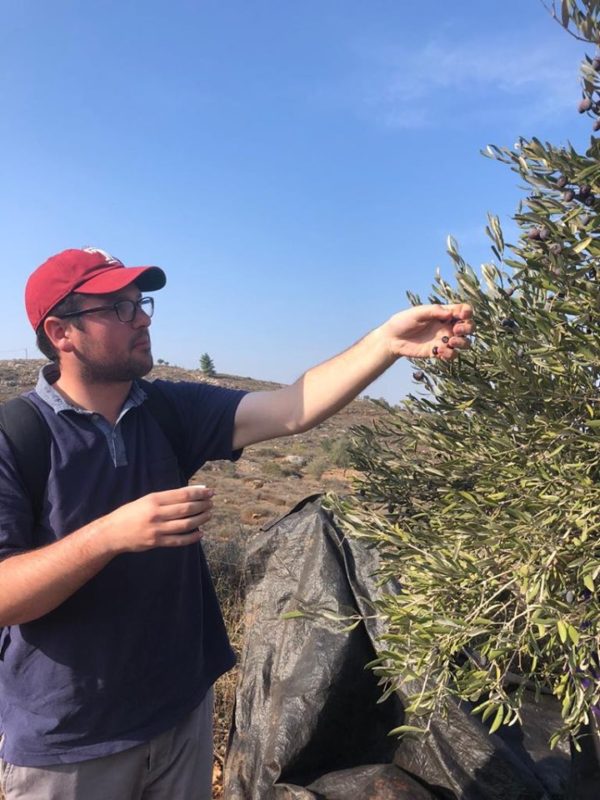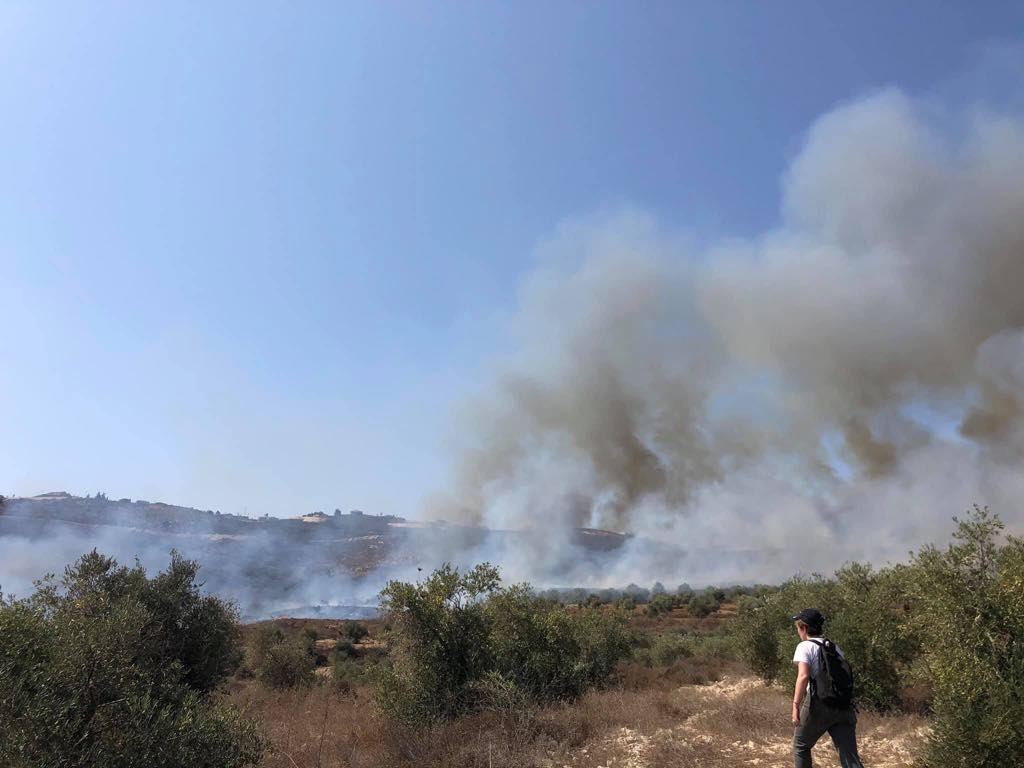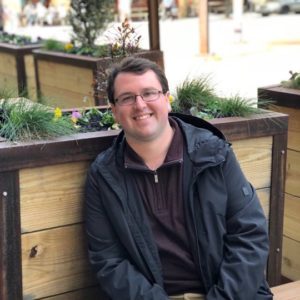At the beginning of September, I began a nine-month program at the Pardes Institute of Jewish Studies in Jerusalem. In addition to spending most of my time poring over classical Jewish texts, I also set out to learn more about Israeli society and the on-the-ground realities of the Occupation.
With those goals in mind, on October 15th, I was on a tour of West Bank settlements with a private group that visits what it calls “modern-day pioneers” and supports them in fully Judaizing the Occupied Territories, which they describe as “the heart of our [God-given] homeland.”
A friend of mine who spent time in Israel-Palestine a few years ago had gone on the tour and said it was eye-opening. I felt deeply uncomfortable about going on the tour and expressing any kind of support for these settlers or their supporters, but I decided to use it as a learning opportunity to better understand how these folks think.
The trip was organized and attended mostly by self-proclaimed Kahanists who, for instance, lauded Baruch Goldstein’s massacre of Palestinians at the Cave of the Patriarchs in 1994 and spoke about expelling all Palestinians from between the river and the sea.
During the tour, we spent the most time in the settlement of Yitzhar, just south of Nablus, which is known for being the home of some of the most extreme settlers in the Occupied Territories.
Haaretz reported that there have been nearly 150 violent incidents by Jews in the Samaria region in the northern West Bank. Yitzhar and its outposts top that list. Haaretz also reported that the army has five times recommended the demolition of a trailer housing extremist young men in the outpost of Kumi Ori, near Yitzhar, but politicians blocked the demolition all five times.
This impunity has laid the groundwork for settlers of Yitzhar to be violent with little pushback from the state.
I ate lunch in the Yitzhar sukkah and davened mincha – the afternoon prayer – outside their synagogue.
Even as I felt my skin crawl during our tour, I decided that it wouldn’t be worth it to argue with a bus full of Kahanists, or the settlers we were visiting. I decided to keep my mouth shut and my horror to myself. While I reminded myself that I was witnessing the most extreme elements of Israeli society, it’s undoubtedly true that the structure of Israeli occupation makes it possible for those extremist elements to survive and prosper in places like Yitzhar.
The same friend who suggested the settlement tour also suggested that I volunteer with Rabbis for Human Rights, an organization which recruits folks every year to assist Palestinian olive farmers during the harvest by both helping them pick olives and documenting routine settler and army violence.

On October 16th, the day after my settlement tour, I traveled alongside three yeshiva friends to the Palestinian village of Burin, south of Nablus. We all had the week off for Sukkot, and wanted to use our free time to volunteer and stand in solidarity with the olive farmers.
We were dropped off on the side of a road and walked about 15 minutes to the grove, which was in a valley below a large hill. At the top of the hill was Yitzhar.
An hour-and-a-half went by with no problems. It was exceedingly hot, and we took breaks every few minutes to drink water and apply more sunscreen. We got to know the farmers we were with as well as the group of British volunteers that were also helping.
Then, suddenly, Mohammed, whose farm we were on, started running towards us and telling us to run. We thought he must have seen settlers coming, but we had no idea what would come next.
We quickly retrieved our backpacks and began running. When we turned around, a group of 15-20 masked settlers were behind us. Many of them had iron crowbars in their hands. Others started picking up stones and throwing them towards us.
A friend of mine was pushed to the ground and hit in the knee with a crowbar. Another, after being bludgeoned by crowbars, was hit in the back of the head by a stone as we were running away. As he started bleeding, we wrapped a scarf around his head and kept going. As we were chased out, the settlers started fires next to the grove.
The next few minutes felt like hours. My friends and I weren’t sure quite how to get back to the road, had been separated from the rest of the group, and didn’t know if the settlers were still following us or how quickly the fire was spreading.
We eventually found one of the farmers and made our way back to the road, where we were met by an ambulance and other assistance.
In the end, one friend needed stitches in his head and another was left nearly unable to walk for days. Rabbi Moshe Yehudai, an 80-year-old Rabbis for Human Rights board member, suffered a broken arm and blows to the head.
On the way back to Jerusalem, I thought about where I’d eaten lunch the day before. Only 24 hours separated being a Jew welcomed to Yitzhar and being a Jew attacked by Yitzhar.
That was all the time it took to make it clear that there is no “both sides” when it comes to the brutalizers of Yitzhar and the nearby Palestinian villagers who are brutalized by them.
Two days after we were attacked, Mohammed As’us, the Burin farmer whose grove we had been on during the attack, was arrested and beaten by Israeli military forces after they declared his land a closed military zone.
The next day, an Israeli soldier was hit by a rock thrown by a settler from Kumi Ori, an outpost near Yitzhar. This act resulted in a condemnation from Prime Minister Benjamin Netanyahu and an immediate investigation launched by the Israeli army, the Shin Bet, and Israeli police forces.
It should not be lost on anyone that this investigation began only after an Israeli soldier was attacked by settlers and not after Palestinian farmers and were attacked and saw their olive trees burn to the ground.
In the days following the attack, I was pained by the fact that many of my Jewish friends from the United States, particularly those of a centrist bend, didn’t reach out to me. It felt like my pain and experience weren’t convenient for them to confront. But even beyond offering mere expressions of support and condemnations of the attack, the American Jewish community must also come to terms with the implications of a 52-year-old military occupation and the flourishing of a Kahanist ideology that leads to routine violence.
It is not enough to pay lip service by criticizing the resurgence of the Kahanist Otzma Yehudit party. We must realize that doing so allows for continued violence and impunity which will ultimately further entrench the Occupation.
If American Jewry is to have a relationship with Israel-Palestine rooted in the values of equality and human rights, we must make clear that this relationship is dependent upon Yitzhar not having a place on the spectrum of Israeli society.
Featured image courtesy of the author.

